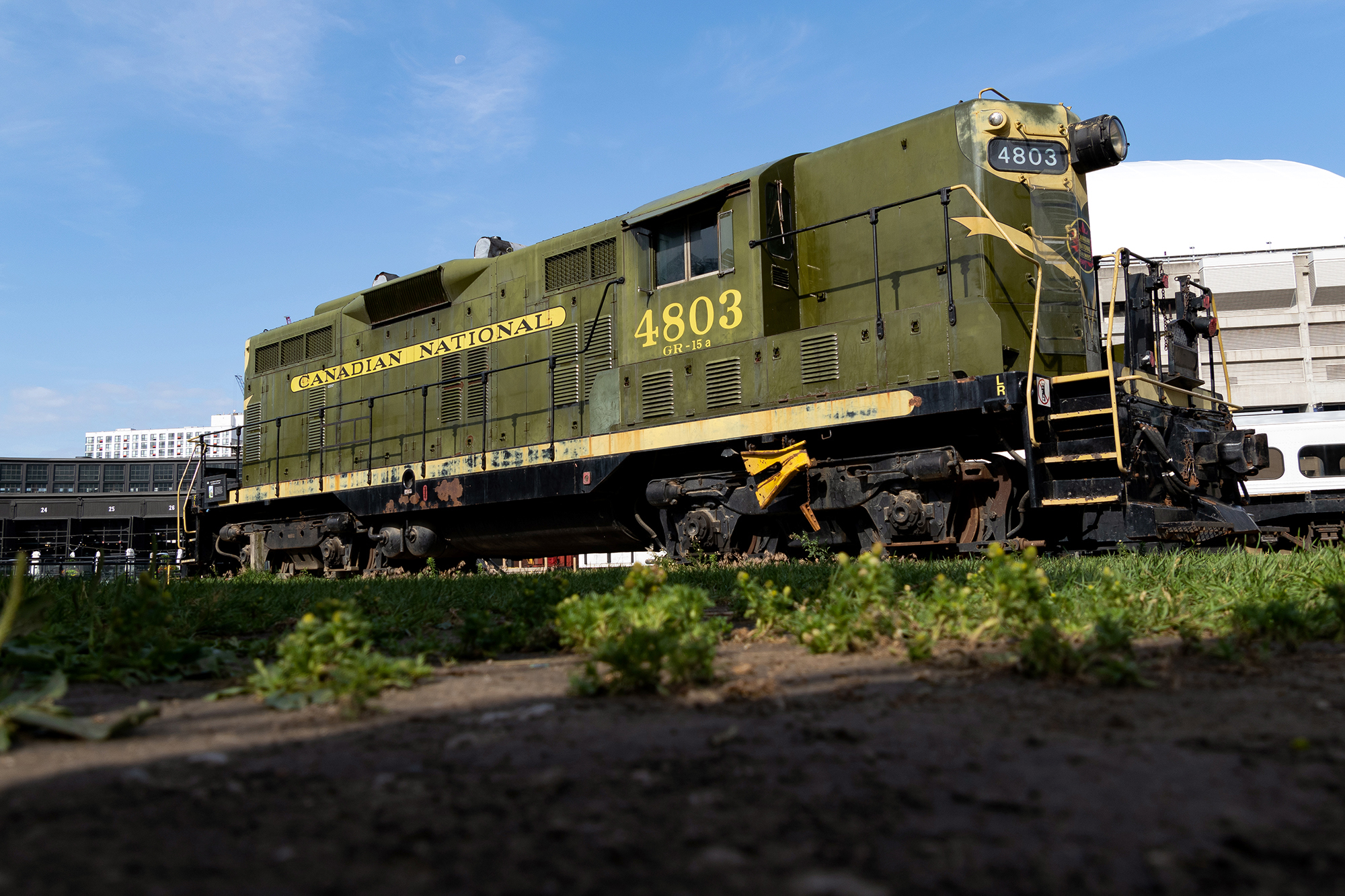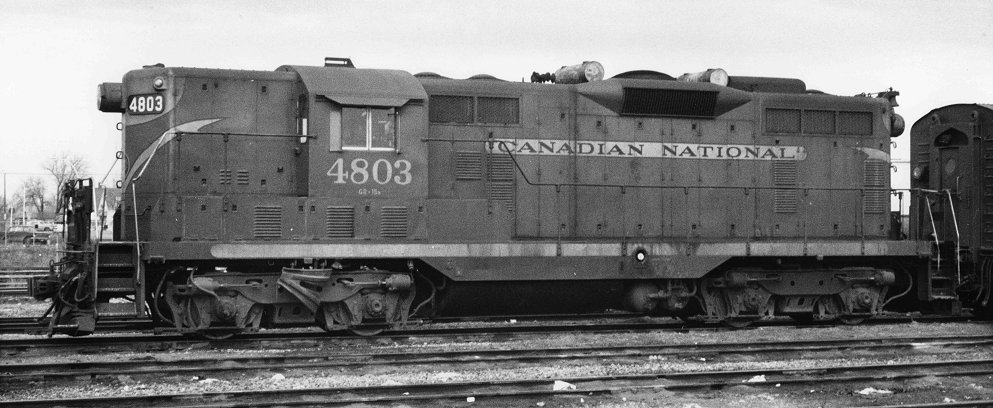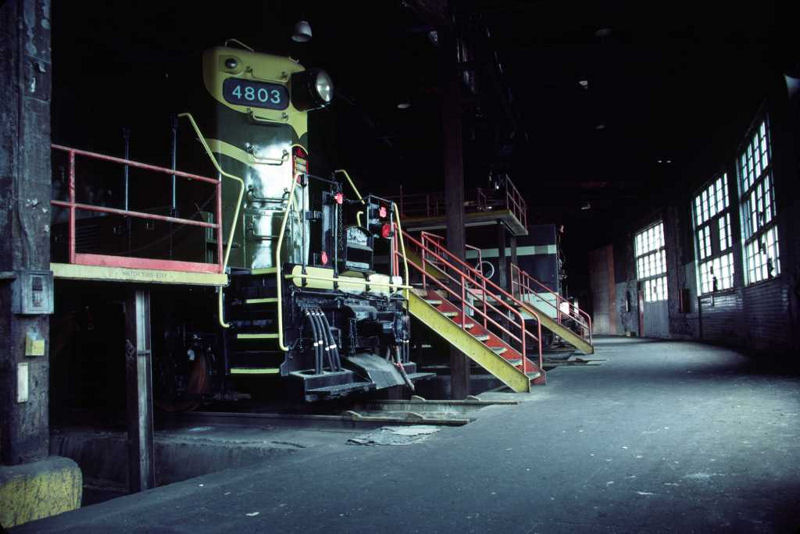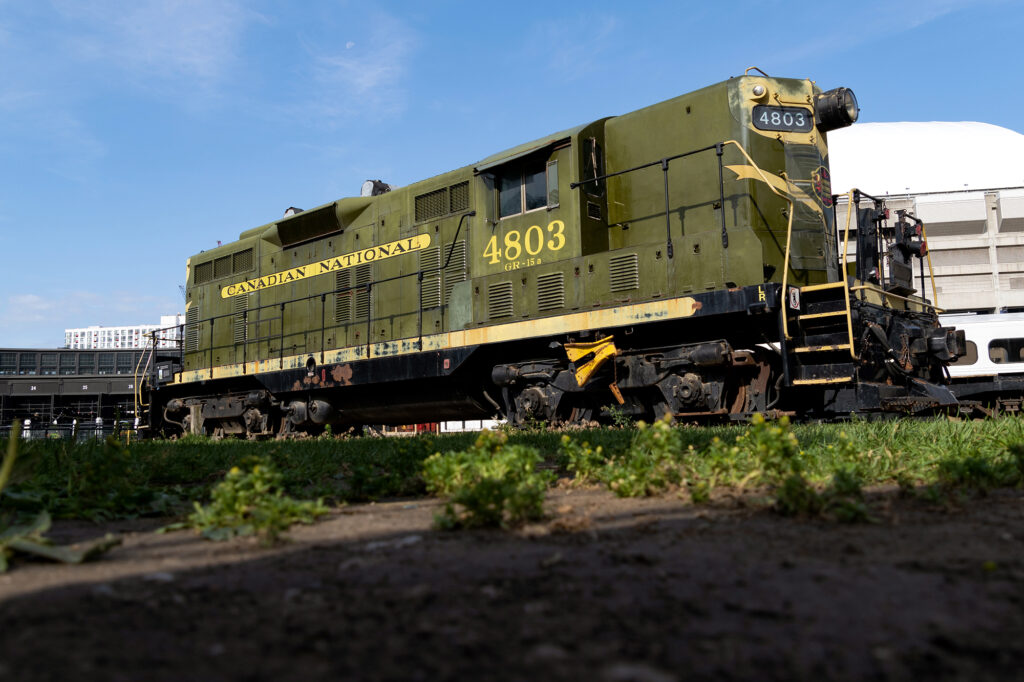This locomotive is the only item in the roundhouse which can be said to be of national significance to the history of Canadian railways. This diesel-electric road-switching locomotive is mechanically complete except for the absence of traction motors. It had been restored to its pre-1960 paint scheme by the CN railway in 1984 prior to its being donated to the City of Toronto. It is one of our most popular attractions at the Toronto Railway Museum, especially when cab tours are featured.
History
The rare high-nose GP7 was built by General Motors Diesel of London, Ontario, in August, 1953, as CN 7558. High-nose GP7’s and GP9’s – so called because their cab was located behind part of the hood, with limited forward visibility – were among the most significant of the diesel locomotive types which displaced steam power during the 1950’s. Few exist in their original configuration at this time; most have had extensive mechanical and cosmetic alterations, and their “high noses” have been cut down to provide a truck-like windshield over the short hood. The original GP7 was built by General Motors in Chicago in 1949. By 1960, it had sired some 7,000 copies, many of which soldier on in secondary services today.
The road-switching locomotive concept was developed by the American Locomotive Company in 1941 with their RS-1 design. In essence, the road-switcher is a do-anything, go-anywhere locomotive, unlike the previous road locomotive designs which were streamlined and unidirectional. Devoid of decoration, the GP7 design is completely functional, bi-directional and eminently efficient. It was utilized in switching service, on heavy road freights and, where equipped with a steam heat boiler or electrical generator for hotel power, to pull passenger trains.
It is powered by a 16-cylinder two cycle diesel engine in an ìVeeî configuration. Each of the sixteen cylinders displaces 567 cubic inches, or about six times the entire displacement of the engine in a modern Toyota Corolla. This large, slow-turning engine produce 1500 horsepower to turn a 600 volt direct current generator; the generator provided current to four large electric motors mounted in the bogies, each driving one axle of the locomotive. The diesel engine also turned a large air compressor, which supply compressed air for the engine and train braking systems.
These locomotives were generally equipped with the capacity to run in sets of up to eight units under the control of single engineer. CN 4803 is also equipped with electrodynamic braking, evidenced by the bulge at the roofline on either side of the long hood. Electrodynamic braking is a process by which the electric motors are turned into generators and the current load produced by the momentum of the train is then dissipated as heat. This system supplemented the friction brakes normally used and greatly reduced wheel wear and wear on the brake shoes.
4803 is also mounted on specialized, lightweight flexicoil bogies or trucks; the truck frame casting is often one of the heaviest components in a diesel-electric locomotive, and 4803 was specially equipped to travel on lightly constructed western branch lines during the autumn grain rush every year. During most of the year, it ran in regular service throughout the country, but come fall, it would head to the prairies.
In 1984, 4803 was donated to the City by the railway in a public ceremony involving then-Mayor Art Eggleton. A brass plaque commemorating that event is held by CN’s public affairs office on Front Street and will be returned to the City for installation on the locomotive. It is in superb cosmetic condition and requires little more than a careful washing to be an excellent display piece.





